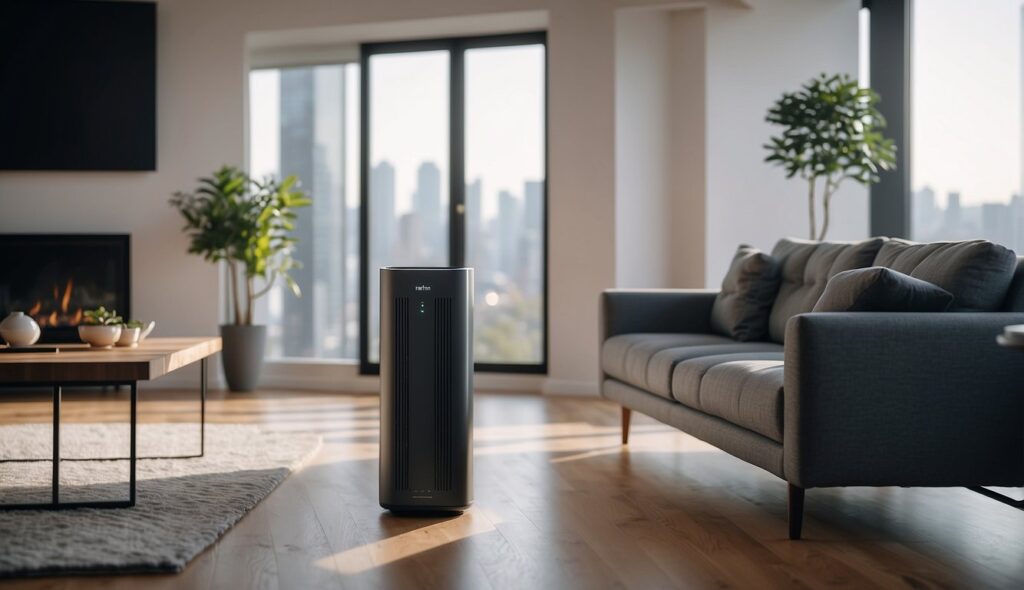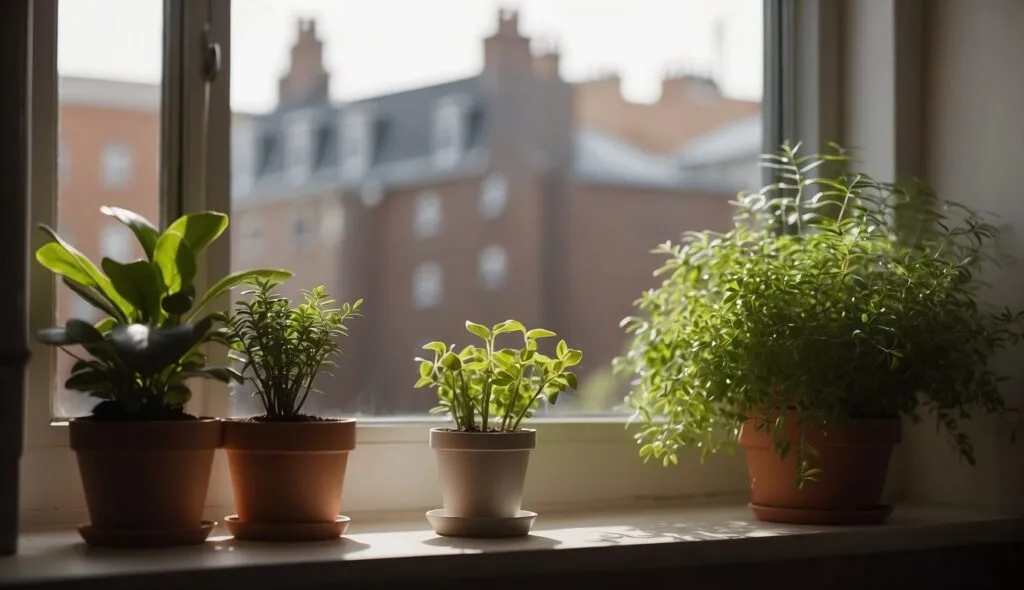Indoor air quality is a crucial aspect of our overall health and well-being. Poor air quality can lead to various respiratory problems, allergies, and even asthma. While there are several ways to improve indoor air quality, one innovative solution is to use plants to purify the air.
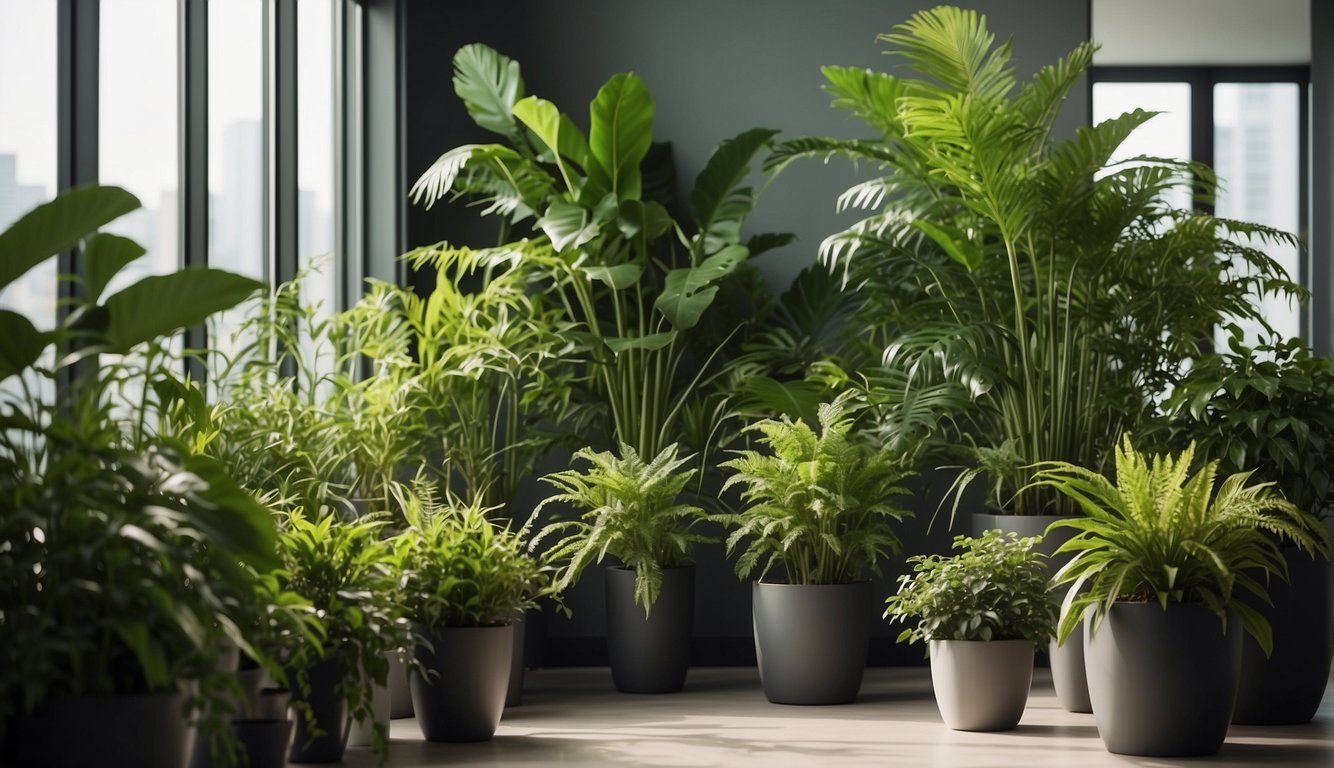
Plants have been used for centuries to improve indoor air quality. They are natural air purifiers and can effectively remove harmful toxins and pollutants from the air we breathe. Several studies have shown that certain plants can significantly improve indoor air quality by removing common pollutants such as formaldehyde, benzene, and trichloroethylene.
In this article, we will discuss the importance of clean air and how plants can help purify the air in your home or office. We will also explore the best houseplants for air purification and provide tips on how to care for your indoor plants. Finally, we will discuss innovative solutions for clean indoor air and answer some frequently asked questions.
Table of Contents
Key Takeaways
- Indoor air quality is crucial for our health and well-being.
- Plants are natural air purifiers and can effectively remove harmful toxins and pollutants from the air.
- Choosing the right plants and caring for them properly can significantly improve indoor air quality.
The Importance of Clean Air
As humans, we spend the majority of our time indoors, whether it be at home, work, or school. It is essential that the air we breathe indoors is clean and free of pollutants and toxins. Poor indoor air quality can lead to a variety of health problems, including respiratory issues, allergies, and even cancer.
Understanding Indoor Air Pollution
Indoor air pollution is a serious problem that affects millions of people worldwide. It is caused by a variety of factors, including poor ventilation, the use of chemical cleaning products, and the presence of mold and mildew. The most common indoor air pollutants include:
- Carbon monoxide
- Radon
- Volatile organic compounds (VOCs)
- Particulate matter
- Mold and mildew
These pollutants can have a significant impact on our health, causing symptoms such as headaches, dizziness, and fatigue. Long-term exposure can lead to more serious health problems, such as cancer and respiratory diseases.
Health Benefits of Improved Air Quality
Improving indoor air quality has numerous health benefits. Clean air can reduce stress levels, improve productivity, and increase concentration. It can also reduce the risk of respiratory problems, allergies, and other health issues.
Plants are an effective and natural way to improve indoor air quality. They have the ability to absorb pollutants and toxins from the air and convert them into oxygen. The NASA Clean Air Study found that certain plants are particularly effective at removing harmful chemicals from the air, such as benzene, formaldehyde, and trichloroethylene.
In conclusion, clean air is essential for our health and well-being. By understanding indoor air pollution and taking steps to improve air quality, we can create a healthier and more productive indoor environment. Incorporating plants into our indoor spaces is a simple and effective way to improve air quality and reap the many health benefits that come with it.
Best Houseplants for Air Purification
When it comes to improving indoor air quality, houseplants are a natural and affordable solution. Not only do they add a touch of greenery to your home, but they also filter out harmful toxins and pollutants from the air. In this section, we will discuss the best houseplants for air purification.
NASA Clean Air Study Overview
The NASA Clean Air Study was conducted in 1989 to find ways to purify the air in space stations. The study found that certain houseplants are highly effective at removing common indoor air pollutants such as benzene, formaldehyde, trichloroethylene, xylene, and toluene. These toxins are commonly found in household items such as cleaning products, furniture, and carpets.
Top Air-Purifying Plants and Their Benefits
Here are some of the top air-purifying plants and their benefits:
Snake Plant: According to the NASA Clean Air Study, snake plants are effective at removing benzene, formaldehyde, trichloroethylene, xylene, and toluene from the air. They are also low maintenance and can survive in low light conditions.
Peace Lily: Peace lilies are known for their ability to remove benzene, formaldehyde, trichloroethylene, xylene, and ammonia from the air. They also add a pop of color to your home with their beautiful white flowers.
Bamboo Palm: The bamboo palm is a great choice for removing formaldehyde, benzene, and carbon monoxide from the air. It also adds a tropical touch to your home decor.
English Ivy: English ivy is effective at removing formaldehyde from the air. It is also easy to care for and can be grown in a hanging basket or trained to climb a trellis.
Aloe Vera: Aloe vera not only has air-purifying properties, but it also has healing properties. It can be used to treat minor burns and cuts.
Spider Plant: Spider plants are great for removing formaldehyde and xylene from the air. They are also easy to care for and can be grown in a hanging basket.
Gerbera Daisy: Gerbera daisies are known for their ability to remove benzene from the air. They also add a pop of color to your home with their bright, colorful flowers.
In conclusion, adding houseplants to your home is an easy and effective way to improve indoor air quality. By choosing the right plants, you can create a healthier and more beautiful living space.
Caring for Your Indoor Plants
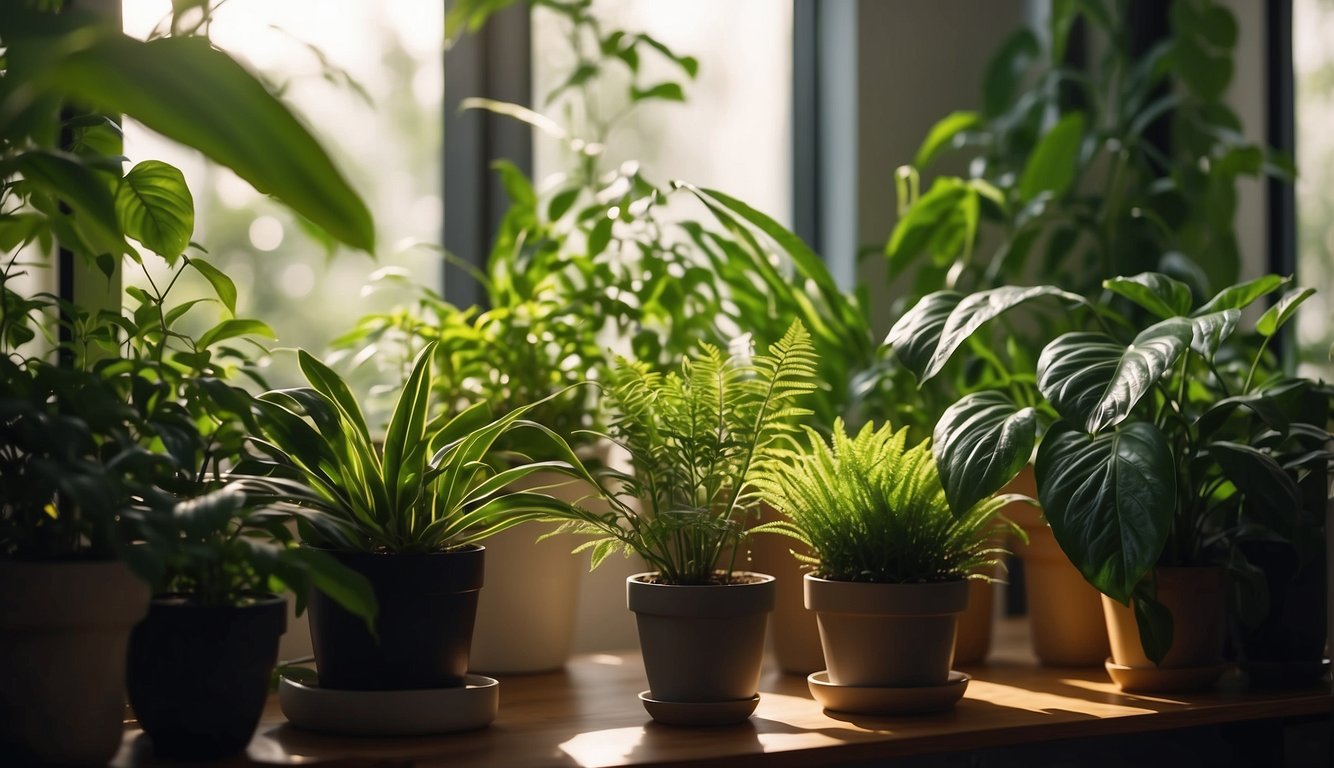
When it comes to plant-powered air purification, taking care of your indoor plants is crucial. Here are some tips to help keep your plants healthy and thriving.
Lighting and Placement
Proper lighting and placement are essential for the health of your indoor plants. Most indoor plants prefer bright, indirect light, so make sure to place them near a window that receives plenty of natural light. However, be careful not to expose them to direct sunlight, as this can damage their leaves.
If you don’t have access to natural light, you can use artificial lighting instead. LED grow lights are a popular choice for indoor plant enthusiasts, as they provide the right spectrum of light for photosynthesis without producing excessive heat.
Watering and Maintenance
Watering and maintenance are also important factors to consider when caring for your indoor plants. Different plants have different watering needs, so make sure to research the specific requirements for each of your plants.
In general, it’s better to underwater than overwater your plants. Overwatering can lead to root rot, which can be fatal for your plants. To avoid this, make sure to let the soil dry out completely between waterings.
Regular maintenance is also important for the health of your plants. This includes pruning dead or yellowing leaves, wiping down the leaves to remove dust and debris, and repotting your plants when they outgrow their current pots.
Conclusion
By following these tips for lighting, watering, and maintenance, you can help ensure that your indoor plants stay healthy and thrive. This, in turn, will help them do their job of purifying the air in your home or office.
Innovative Solutions for Clean Indoor Air
Indoor air pollution is a major concern for many households. Poor air quality can lead to various health issues like allergies, respiratory problems, and even cancer. While air purifiers have been used for quite some time, there is a growing trend towards plant-powered air purification. In this section, we will discuss the innovative solutions available for clean indoor air.
Air Purifiers and Their Role
Air purifiers have been around for decades and are a popular solution for clean indoor air. These devices work by filtering out pollutants and particles from the air, using a HEPA filter. HEPA filters are designed to trap microscopic particles like dust, pollen, and pet dander, ensuring that the air you breathe is clean and fresh.
While air purifiers are effective, they do have some limitations. Firstly, they can be expensive to purchase and maintain. Secondly, they consume electricity, which can add to your energy bills. Thirdly, they are not always effective against volatile organic compounds (VOCs), which are harmful gases emitted by household items like cleaning products, paints, and furniture.
Integrating Plants and Technology
Plant-powered air purification is an innovative solution that has gained popularity in recent years. Plants are natural air purifiers and can absorb pollutants like benzene, formaldehyde, and trichloroethylene. Integrating plants with technology has led to the development of hybrid air purifiers that combine the benefits of plants and HEPA filters.
These devices use a fan to circulate air through the plant’s roots, where it is purified by the plant’s natural filtration system. The air is then passed through a HEPA filter, which captures any remaining pollutants. The result is clean, fresh air that is free from harmful pollutants.
In addition to hybrid air purifiers, there are also standalone plant-based air purifiers that use the natural filtration power of plants to clean the air. These devices are low-maintenance and require minimal electricity, making them a cost-effective solution for clean indoor air.
In conclusion, there are several innovative solutions available for clean indoor air. While air purifiers are effective, they can be expensive and consume electricity. Plant-powered air purification is a natural and cost-effective solution that can be integrated with technology for maximum effectiveness. Whether you choose a hybrid air purifier or a standalone plant-based air purifier, you can be confident that you are breathing clean, fresh air.
Conclusion
In conclusion, plant-powered air purification is a promising solution to indoor air pollution. By harnessing the natural air-purifying abilities of plants, we can create a healthier and more sustainable living environment.
Through our research, we have found that certain plants are particularly effective at removing harmful pollutants from the air, including benzene, formaldehyde, and trichloroethylene. These plants include the spider plant, peace lily, and snake plant, among others. By incorporating these plants into our homes and workplaces, we can significantly improve the air quality and reduce our exposure to harmful toxins.
Furthermore, plant-based air purifiers offer a number of benefits over traditional air purifiers. They are more cost-effective, require less maintenance, and are more eco-friendly. Additionally, they can help to improve mood and reduce stress levels, as well as add a touch of natural beauty to indoor spaces.
That being said, it’s important to note that plant-powered air purification is not a cure-all solution. While plants can certainly help to improve air quality, they are not a substitute for proper ventilation and other air-cleaning measures. It’s also important to choose the right plants for your space and to care for them properly in order to maximize their air-purifying potential.
Overall, we believe that plant-powered air purification is a valuable tool in the fight against indoor air pollution. By incorporating plants into our living and working spaces, we can create a healthier and more sustainable environment for ourselves and future generations.
Frequently Asked Questions
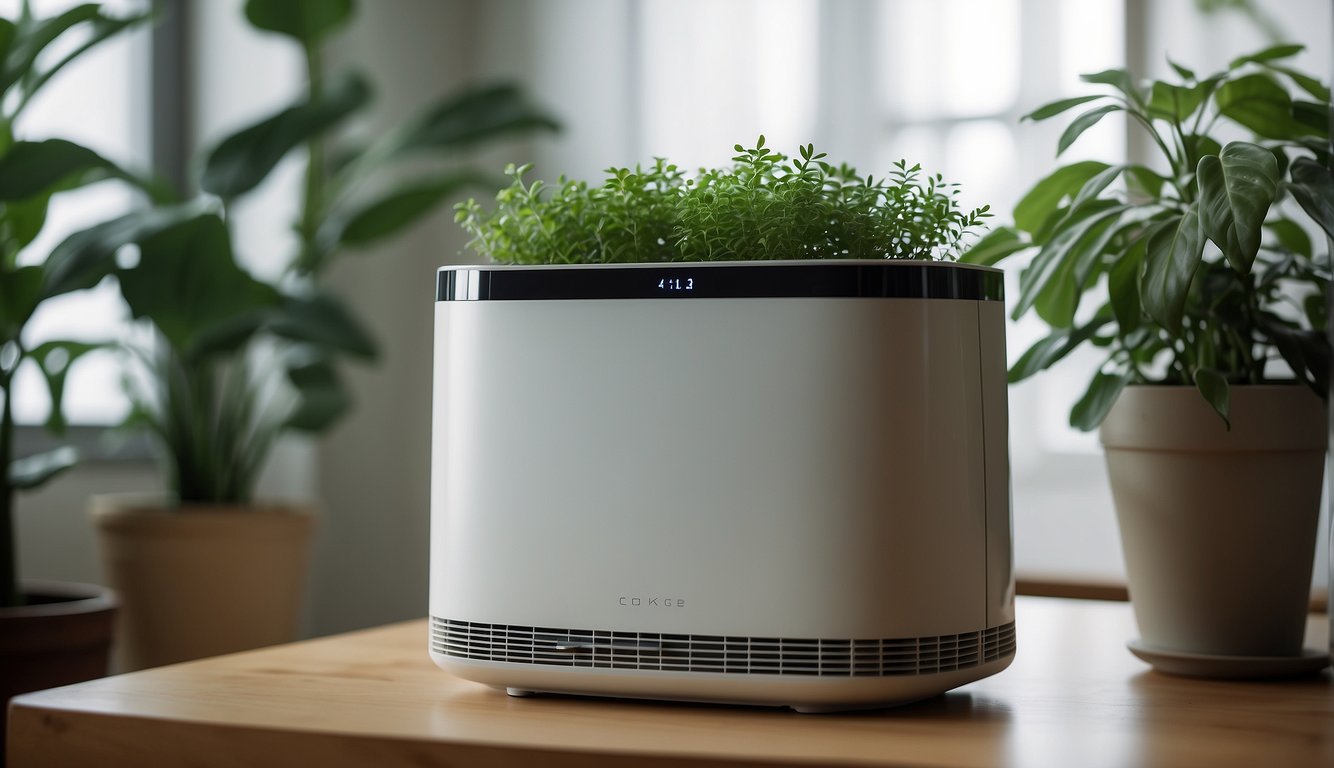
What are the top-rated plants for indoor air purification?
There are numerous plants that are known for their air-purifying properties. Some of the top-rated plants for indoor air purification include Spider Plant, Peace Lily, Snake Plant, Aloe Vera, and English Ivy. These plants are easy to care for and can effectively remove indoor air pollutants.
How effective are plants in purifying indoor air compared to traditional air purifiers?
While traditional air purifiers can effectively remove indoor air pollutants, plants can also play a significant role in improving indoor air quality. According to a study conducted by NASA, certain plants can remove up to 87% of indoor air pollutants in just 24 hours. Additionally, plants can also add humidity to the air, which can help alleviate respiratory problems.
Can you list the most recommended plants for reducing indoor air pollutants?
Some of the most recommended plants for reducing indoor air pollutants include Spider Plant, Peace Lily, Snake Plant, Aloe Vera, English Ivy, Bamboo Palm, and Rubber Plant. These plants are known for their air-purifying properties and are easy to care for.
What scientific evidence supports the use of plants for air purification?
There is scientific evidence that supports the use of plants for air purification. According to a study conducted by NASA, certain plants can effectively remove indoor air pollutants such as benzene, formaldehyde, and trichloroethylene. Additionally, plants can also add humidity to the air, which can help alleviate respiratory problems.
How do specific plants contribute to air quality improvement indoors?
Specific plants contribute to air quality improvement indoors by absorbing harmful pollutants and releasing oxygen. For example, Snake Plant is known for its ability to remove formaldehyde from the air, while Peace Lily is known for its ability to remove benzene and trichloroethylene.
What maintenance is required to ensure plants effectively purify the air?
To ensure that plants effectively purify the air, it is important to keep them healthy and well-maintained. This includes providing them with the right amount of light, water, and nutrients. Additionally, it is important to regularly clean the leaves of the plants to remove any dust or debris that may have accumulated.

